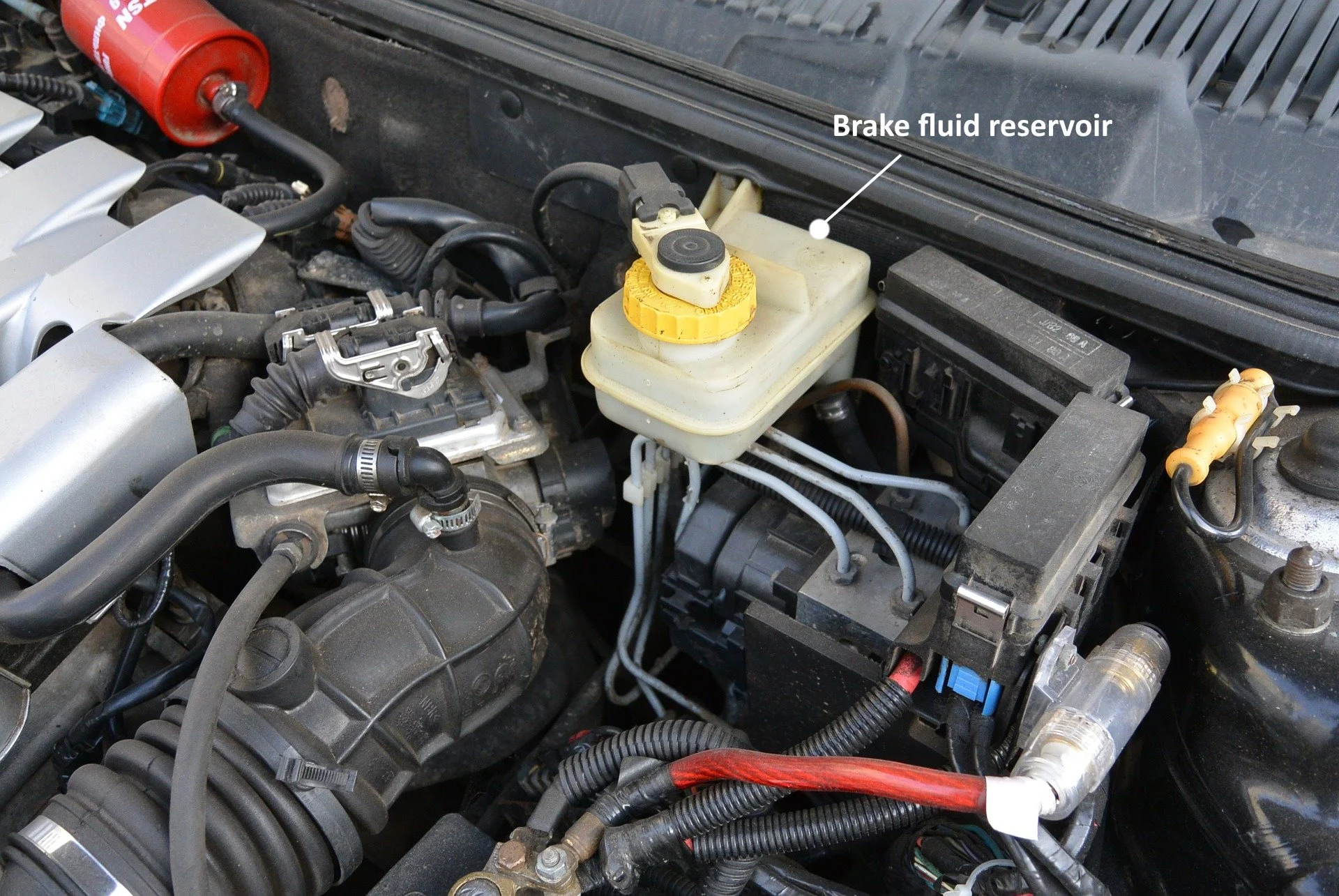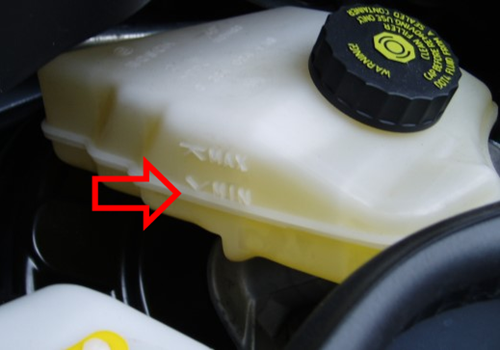


Brake fluid is a hydraulic fluid used in brake and clutch systems of vehicles. It typically contains toxic alcohols like ethylene glycol and diethylene glycol (DEG). Ingestion of brake fluid, whether accidental or intentional, can lead to poisoning with potentially life-threatening consequences.

Brake fluid is a hydraulic fluid used in a vehicle's braking system to transfer the force applied by the driver's foot on the brake pedal to the brake calipers or wheel cylinders. It is a crucial component that ensures the proper functioning of the brakes, which is essential for safe driving.
However, brake fluid often contains toxic substances like ethylene glycol or diethylene glycol. These substances are added to the brake fluid to enhance its performance and prevent freezing or boiling at extreme temperatures. While they serve an important purpose, ingesting brake fluid can lead to poisoning with potentially severe consequences.
| Toxic Components | Effects |
|---|---|
| Ethylene Glycol | Metabolized into toxic compounds that can damage the kidneys, brain, and other organs. |
| Diethylene Glycol | Metabolized into toxic compounds that can damage the kidneys, brain, and other organs. |
The main causes of brake fluid poisoning are:
Accidental Ingestion: Brake fluid has a sweet taste that can attract children and pets to drink it accidentally. This is a common scenario, as children are naturally curious, and pets may be drawn to the sweet smell or taste.
Intentional Ingestion: In some cases, brake fluid may be ingested intentionally, either in cases of attempted suicide or substance abuse. This is a concerning issue that requires immediate medical attention and professional support.
If brake fluid is ingested, it's crucial to recognize the symptoms promptly. The primary symptoms of brake fluid poisoning include:
| Symptoms |
|---|
| Nausea and vomiting |
| Abdominal pain |
| Drowsiness and confusion |
| Seizures |
| Decreased urine output |
These symptoms can vary in severity depending on the amount of brake fluid ingested and the time elapsed since ingestion.
If you suspect brake fluid poisoning, it's essential to take the following steps:
Observe Symptoms: Look for the symptoms mentioned above, and note their onset and progression.
Blood Tests: Request blood tests to check for elevated levels of ethylene glycol or its metabolites, as well as metabolic acidosis and an increased anion gap.
| Blood Test Indicators | |------------------------| | Elevated levels of ethylene glycol or its metabolites | | Metabolic acidosis | | Increased anion gap |
Obtain History: Gather information about any potential ingestion of brake fluid or other toxic substances.
If brake fluid poisoning is confirmed, prompt treatment is crucial. The treatment may include:
Decontamination: If ingestion was recent, inducing vomiting or administering activated charcoal may help remove the toxin from the body.
Antidote: Fomepizole is an antidote that can prevent the metabolism of ethylene glycol into toxic compounds.
Hemodialysis: In severe cases, hemodialysis may be required to remove the toxic metabolites from the bloodstream and correct metabolic abnormalities.
Supportive Care: Intravenous fluids, correction of electrolyte imbalances, and respiratory support may be necessary depending on the severity of poisoning.

Preventing brake fluid poisoning is crucial, as the treatment can be costly and the consequences severe. Here are some preventive measures:
Safe Storage: Store brake fluid securely, out of reach of children and pets. Keep it in its original container and properly labeled.
Proper Disposal: Dispose of used brake fluid according to hazardous waste regulations. Do not pour it down drains or on the ground.
Education: Educate others, especially those with children, about the dangers of ingesting brake fluid and the importance of seeking immediate medical attention if ingestion occurs.
The cost of treating brake fluid poisoning can be significant, ranging from thousands to tens of thousands of dollars, depending on the severity of the case and the duration of treatment needed. Early recognition and treatment can help minimize the costs associated with this type of poisoning.
| Cost Factors | Estimated Cost Range |
|---|---|
| Hemodialysis | $5,000 - $20,000 |
| Intensive Care Unit (ICU) Stay | $3,000 - $10,000 per day |
| Antidote (Fomepizole) | $1,000 - $5,000 |
| Additional Medical Expenses | Varies based on complications and duration of treatment |
Brake fluid poisoning is a serious issue that requires prompt recognition and appropriate treatment. As a mechanic, I've witnessed firsthand the potential consequences of ingesting brake fluid, and I cannot stress enough the importance of proper handling, storage, and disposal of this toxic substance.
By understanding the symptoms, causes, identification methods, treatment options, and preventive measures, we can work together to minimize the risks associated with brake fluid poisoning. Remember, education and vigilance are key to ensuring the safety of ourselves, our loved ones, and our communities.
If you suspect brake fluid poisoning, do not hesitate to seek immediate medical attention. Early intervention can make a significant difference in the outcome and potentially save lives.
Brake fluid typically contains toxic substances like ethylene glycol or diethylene glycol, which are added to enhance performance and prevent freezing or boiling. These substances can cause poisoning if ingested.
Brake fluid poisoning usually occurs through accidental ingestion, especially by children or pets attracted to its sweet taste, or intentional ingestion in cases of attempted suicide or substance abuse.
Early symptoms include nausea, vomiting, abdominal pain, drowsiness, confusion, and decreased urine output. Seizures may also occur in severe cases.
It is diagnosed through observing symptoms, obtaining history of potential ingestion, and conducting blood tests to check for elevated ethylene glycol levels, metabolic acidosis, and increased anion gap.
Treatment may involve decontamination, administering the antidote fomepizole, hemodialysis to remove toxins, and supportive care like intravenous fluids and respiratory support.
Yes, brake fluid poisoning can be fatal if not treated promptly and properly, as the toxic metabolites can cause severe damage to the kidneys, brain, and other organs.
Prevention involves safe storage of brake fluid away from children and pets, proper disposal according to hazardous waste regulations, and educating others about the dangers of ingestion.
Treatment costs can range from thousands to tens of thousands of dollars, depending on the severity of the case and the duration of treatment required, including expenses for hemodialysis, intensive care, antidote, and additional medical care.
If not treated promptly, brake fluid poisoning can lead to long-term effects such as kidney damage, brain damage, and neurological complications like muscle paralysis or optic nerve damage.
If you suspect brake fluid poisoning, seek immediate medical attention. Early intervention and treatment can significantly improve the outcome and potentially save lives.

Sarah isn't your average gearhead. With a double major in Mechanical Engineering and Automotive Technology, she dived straight into the world of car repair. After 15 years of turning wrenches at dealerships and independent shops, Sarah joined MICDOT to share her expertise and passion for making cars run like new. Her in-depth knowledge and knack for explaining complex issues in simple terms make her a valuable asset to our team.



